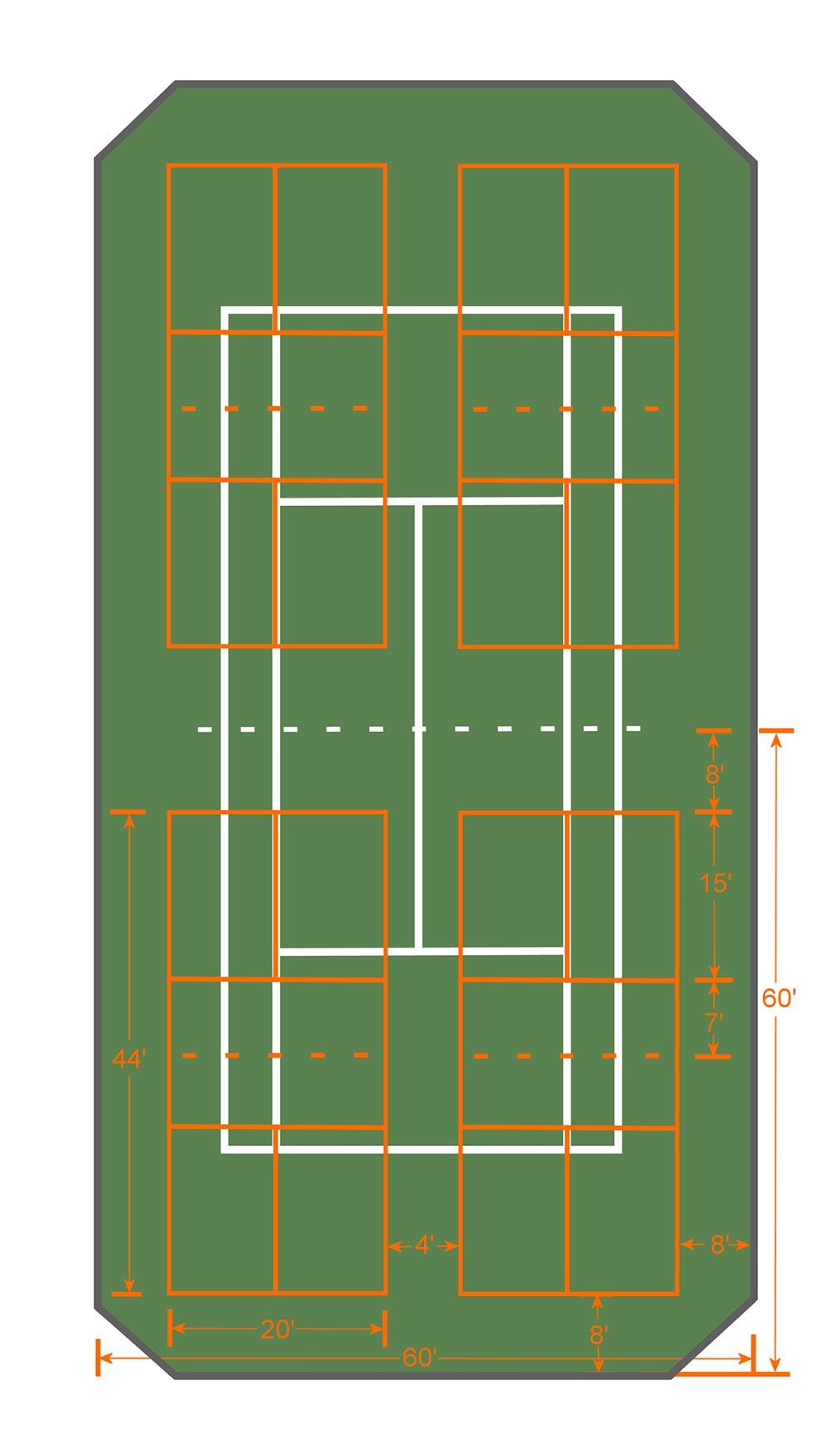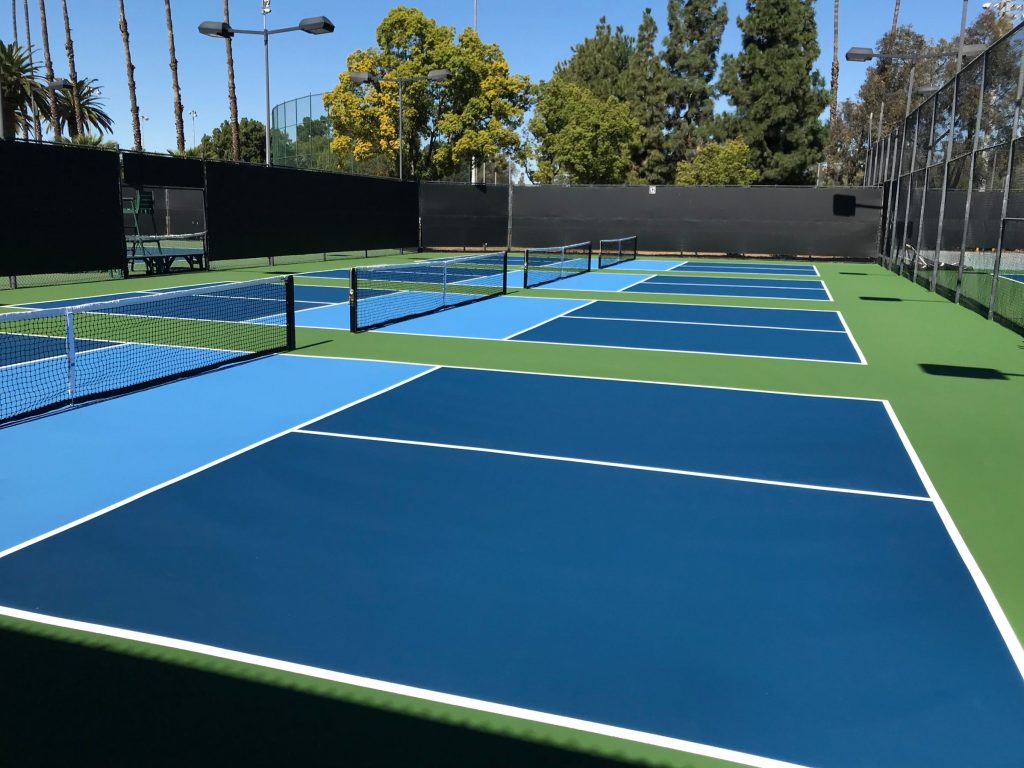Transform Your Area with High Quality Pickleball Courts Style & Building in Illinois and Midwest
Transform Your Area with High Quality Pickleball Courts Style & Building in Illinois and Midwest
Blog Article
Trick Consider the Construction of Pickleball Judiciaries: From Site Option to Last Surfaces
The construction of pickleball courts encompasses a variety of critical variables, beginning with the option of a suitable site that stabilizes ease of access with ecological considerations. Vital elements such as court measurements, surface area materials, and drain systems significantly affect not just the quality of play yet also the durability of the center. Furthermore, interest to lights and finishing touches can raise the total experience for players and spectators alike. Understanding how each of these elements interrelates might disclose insights that are typically forgotten, triggering a better evaluation of ideal practices in court building and construction.
Site Selection Criteria
When beginning on the building of pickleball courts, it is important to pin down the site choice requirements that will certainly make sure ideal playability and availability. The place needs to be conveniently obtainable for gamers, ideally situated near houses or recreation center, to motivate involvement.
In addition, the surface must be level and steady, as uneven ground can cause security risks and affect gameplay. Adequate water drainage is additionally important; choosing a site with excellent water drainage will assist maintain court problems during adverse climate.
One more vital factor to consider is the accessibility of utilities. Accessibility to power and water is needed for lighting and upkeep purposes. In addition, distance to vehicle parking facilities is necessary, helping with easy gain access to for players and viewers alike.
Ecological aspects can not be overlooked; all-natural shade from trees can improve player convenience, while exposure to prevailing winds might disrupt play. Last but not least, zoning policies and area assistance need to be thought about to ensure that the job straightens with regional standards and receives the backing it requires for effective application. By thoroughly reviewing these standards, stakeholders can create an inviting and practical setting for pickleball enthusiasts.
Court Dimensions and Design
To make certain optimal gameplay and adherence to policies, the measurements and format of pickleball courts have to be meticulously specified. A standard pickleball court determines 20 feet in width and 44 feet in length for both songs and increases play. The advised format consists of a non-volley area, typically referred to as the "kitchen area," prolonging 7 feet from the web on either side. This location is critical, as it affects gamer positioning and shot option - Illinois and midwest.
The web elevation is established at 36 inches at the sidelines and 34 inches at the facility, producing a small dip that affects ball trajectory. Court markings are equally vital; lines should be 2 inches vast and distinctive in shade to make sure exposure.
Additionally, a buffer area bordering the court is suggested, usually extending 5 to 10 feet beyond the sidelines and standards to fit gamers' activities and enhance security. Appropriate layout and measurements not just make sure compliance with official regulations but also boost the general playing experience, suiting both leisure and competitive play. Mindful preparation in these areas is paramount to the effective building of pickleball courts.
Surface Product Options
Selecting the appropriate surface product for pickleball courts is critical for ensuring optimum player efficiency and security. The choice of surface can significantly influence gameplay, including round bounce, see grip, and gamer comfort.
There are a number of options available, each with its distinct features. Asphalt his comment is here is a prominent selection due to its toughness and low upkeep requirements. It supplies a strong playing surface area that can withstand different weather yet might need routine resurfacing.
Concrete is another commonly made use of material, using outstanding long life and a smooth finish. It enables for regular ball bounce however can be tough on gamers' joints, making it less desirable for long-lasting play without proper cushioning.
For those looking for enhanced comfort and shock absorption, supported acrylic surface areas present a feasible choice. These surfaces combine a base layer with an acrylic overcoat, offering enhanced grip look what i found and a softer feeling, which is beneficial for minimizing the threat of injuries.
Last but not least, artificial turf is acquiring traction, especially for multi-purpose centers. Its convenience and reduced upkeep requires make it an attractive alternative, though it may not provide the same sphere action as standard tough courts. Mindful factor to consider of these alternatives will guarantee an ideal playing atmosphere.
Drain and Lighting Considerations
Proper drainage and effective lights are necessary parts in the building of pickleball courts, considerably influencing both playability and security. Adequate drainage systems prevent water accumulation, which can lead to unsafe surface areas and damages to the court structure. A properly designed water drainage plan incorporates sloped surfaces and proper products to help with water flow far from the playing location - Illinois and midwest. This not only preserves the honesty of the court however likewise minimizes downtime due to inadequate weather.
Lighting is similarly essential, especially for courts planned for night use. Appropriate lighting enhances exposure, making certain that players can see the round plainly and decreasing the threat of crashes. The placement of illumination components need to be purposefully planned to remove shadows and supply even circulation of light across the court. LED lights are recommended for their energy performance and long life, supplying bright illumination while minimizing functional prices.

Last Coatings and Upkeep
After resolving drain and lights factors to consider, attention turns to the last coatings and continuous maintenance of pickleball courts. Common alternatives include acrylic coverings and specialized sports surface areas that offer optimal grip and padding.

Seasonal upkeep might include resurfacing every couple of years, depending on usage and ecological variables. Correctly keeping nets, court lines, and bordering locations is similarly important to give a safe and satisfying having fun experience. By investing in high quality coatings and sticking to an organized maintenance timetable, center owners can ensure their pickleball courts stay in superb problem for years to find.
Final Thought
In verdict, the successful construction of pickleball courts pivots on careful interest to several vital aspects. High quality finishes and a durable upkeep routine are necessary for maintaining the court's condition, enhancing the total experience for players and viewers alike.
Report this page